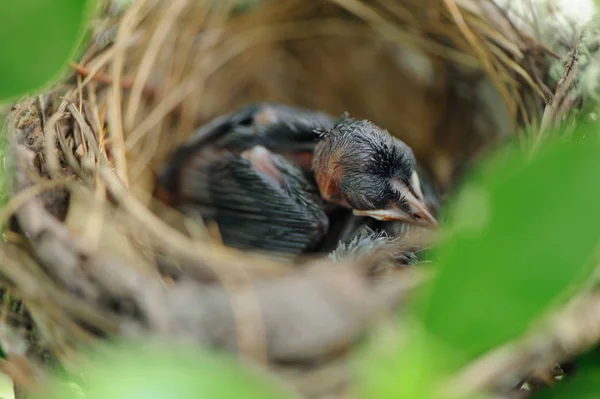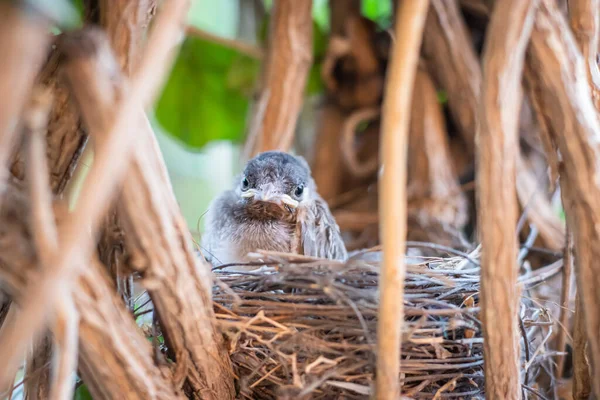Can you give hummingbirds cold sugar water to provide them with a refreshing and energizing treat on a hot day?
In the enchanting world of hummingbirds, where iridescence dances on delicate wings and the air hums with the vibrancy of tiny miracles, a question arises like a whispered secret: Can you give these feathered jewels cold sugar water? Picture a moment frozen in time, where the ethereal beauty of these aerial acrobats converges with the simplicity of a chilled concoction.
As we explore the intersection of nature’s marvels and our own gestures of care, the answer unveils itself in a tale that intertwines the warmth of hospitality with the cool embrace of sugar-infused refreshment for our avian companions.
So, let’s embark on a journey into the realm of hummingbirds and the chilled elixir that might just be the key to inviting them into our world.

Can You Give Hummingbirds Cold Sugar Water
Balancing Act: Understanding Hummingbird Preferences
Hummingbirds are renowned for their love of nectar, a sweet concoction that fuels their high-energy flights. Crafting the perfect sugar water solution involves blending white granulated sugar with water, replicating the natural sweetness found in flowers. While room temperature water is commonly recommended, offering cold sugar water occasionally can be acceptable, particularly during warmer seasons.
Metabolic Considerations: Navigating Temperature Extremes
Hummingbirds have a fast metabolism, and their energy requirements are substantial. Cold sugar water might be less appealing, as it can slow down their digestion and absorption of essential nutrients. Striking a balance by offering cool, not icy, sugar water acknowledges their need for refreshment without compromising their metabolic efficiency.
Sumptuous Feasts: Crafting the Ideal Hummingbird Oasis
Creating an ideal hummingbird oasis involves not only offering the right temperature of sugar water but also providing a clean and inviting feeding environment. Regularly clean feeders to prevent the growth of harmful molds, and position them in shaded areas to maintain a moderate temperature. By understanding the delicate nuances of their preferences, you can transform your backyard into a haven for these enchanting aerial wonders.
Hummingbird Physiology
Hummingbirds, nature’s aerial acrobats, exhibit an extraordinary blend of agility and energy efficiency.
Metabolic rate and energy requirements
This surge to remarkable levels, with these avian wonders boasting the highest metabolism of any bird species. Their metabolism is comparable to a finely tuned engine, requiring a constant intake of nectar, which serves as their primary fuel source.
Adaptations for high energy expenditure
These are evident in their unique physiology. Remarkably, these feathered dynamos have evolved specialized muscle fibers to power their rapid wing beats, allowing them to hover with unparalleled precision. Their hearts beat at an astounding rate, often exceeding 1,200 beats per minute during flight, a testament to their finely tuned cardiovascular systems.
Sensitivity to environmental factors, including temperature
This is a critical aspect of hummingbird survival. These dainty yet resilient creatures are highly attuned to ambient temperatures, adjusting their metabolic rates and behaviors accordingly. In colder climates, they enter a state of torpor, effectively lowering their body temperature to conserve energy. Conversely, in warmer conditions, their metabolism accelerates, emphasizing their adaptability to diverse environments.
Sugar Water Composition
Standard hummingbird nectar recipe
This is a simple yet crucial aspect of catering to the dietary needs of these tiny aviators. A common recipe involves mixing four parts water with one part white granulated sugar, mimicking the natural sucrose content found in many flowers. This concoction closely emulates the nutritional profile of floral nectar, providing the essential sugars vital for hummingbird energy.
Role of sugar concentration in meeting energy needs
Hummingbirds, with their breakneck metabolism, require a high-energy diet. The sugar concentration in their nectar plays a pivotal role in supplying the quick-burning fuel essential for their rapid wing beats and sustained flight. A delicate balance exists, as too much or too little sugar can impact the overall nutritional value, influencing the bird’s health and energy levels.
Considerations for the impact of temperature on sugar solubility
Add a layer of complexity to hummingbird nectar preparation. With temperature fluctuations, the solubility of sugar in water changes. In cooler conditions, it may be necessary to warm the mixture slightly to ensure proper dissolution, while in warmer climates, careful monitoring is essential to prevent sugar crystallization. This nuanced understanding of sugar-water dynamics aligns with the meticulous nature of hummingbird care, underscoring the importance of environmental factors in maintaining optimal nutrition.
Temperature Preferences of Hummingbirds
Natural habitats and temperature ranges
Natural habitats and temperature ranges define the nuanced environments where hummingbirds thrive. From the tropical rainforests to the chilly mountainous regions, these agile creatures adapt to a wide spectrum of temperatures. Tropical species revel in warmer climates, while their counterparts in temperate zones navigate cooler conditions. Understanding their natural habitats provides insights into the temperature ranges conducive to their well-being.
Behavioral adaptations to varying temperatures
Temperatures showcase the hummingbird’s resilience. In cooler temperatures, they adjust their metabolism, conserving energy through controlled shivering. Seeking shelter in protected areas, these miniature marvels showcase behavioral flexibility. Conversely, in warmer weather, they engage in strategic rest periods, regulating their activity to avoid overheating. These behavioral nuances underscore their ability to thrive across diverse temperature gradients.
Impact of temperature on foraging patterns
This offers a glimpse into the dynamic relationship between environmental conditions and hummingbird behavior. Warmer temperatures often coincide with increased foraging activity as the birds capitalize on heightened energy demands. Cooler temperatures may prompt more deliberate foraging, emphasizing the need for efficient nectar acquisition. Temperature, therefore, serves as a key determinant shaping the intricate dance of hummingbird foraging patterns.
Effects of Cold Sugar Water on Hummingbirds
Metabolic considerations
Influence on energy absorption
Cold sugar water introduces metabolic nuances in hummingbirds. As endothermic creatures, these birds rely on external energy sources. Cold nectar may alter the rate of energy absorption, potentially affecting the bird’s overall metabolic efficiency. Quick access to warmer nectar becomes vital to sustain their high-energy lifestyle.
Impact on digestion and nutrient assimilation
The temperature of ingested nectar can impact digestive processes. Cold sugar water may slow down enzymatic activity, affecting the efficient breakdown of sugars. This, in turn, influences nutrient assimilation, underscoring the importance of offering nectar at an optimal temperature to support hummingbird nutritional needs.
Behavioral responses
Feeding behavior in response to temperature
Hummingbirds exhibit adaptive feeding behavior in response to cold sugar water. In colder conditions, they may adjust their feeding frequency to compensate for the decreased energy absorption. Observing these behavioral shifts provides valuable insights into their ability to navigate environmental challenges.
Potential aversions to cold sugar water
There’s a likelihood of hummingbirds displaying aversions to cold nectar. The birds may exhibit discerning behavior, avoiding sources of colder sugar water. This emphasizes the significance of maintaining the appropriate temperature to encourage regular feeding and ensure the bird’s sustained health.
Research Studies and Experiments
Review of existing studies on hummingbird feeding behavior
Existing studies on hummingbird feeding behavior unveil a tapestry of insights into the intricacies of their foraging habits. Researchers have delved into factors such as nectar preferences, feeding frequency, and territorial behavior. These studies contribute to a comprehensive understanding of the dynamic interplay between hummingbirds and their environment, laying the groundwork for further exploration.
Experimental designs to assess the impact of cold sugar water
To assess the impact of cold sugar water, experimental designs come to the forefront. Controlled experiments involving varied nectar temperatures allow researchers to observe real-time reactions. Parameters such as feeding rates, metabolic changes, and behavioral adaptations become focal points. By manipulating temperature variables, scientists can unravel the specific effects and refine recommendations for optimal hummingbird care.
Interpretation of findings and implications for hummingbird health
Interpreting findings from experiments on cold sugar water provides valuable insights into the potential implications for hummingbird health. Understanding how temperature affects feeding behavior, metabolic processes, and overall well-being enables researchers to draw connections between environmental factors and the birds’ physiological responses. These insights, in turn, hold implications for conservation efforts, captive care, and habitat preservation.
In the realm of hummingbird research, the synthesis of existing knowledge with experimental endeavors propels our comprehension of these fascinating creatures. From feeding behavior nuances to the impact of temperature on health, each study adds a layer to the intricate narrative of hummingbird ecology, fostering a deeper appreciation for these aerial wonders.
Practical Considerations for Offering Cold Sugar Water
Weather-related considerations
Seasonal variations in temperature: Adapting to seasonal temperature changes is paramount when offering cold sugar water to hummingbirds. Understanding the temperature fluctuations across seasons allows caregivers to tailor their approach, ensuring the nectar remains within a suitable range for the birds. Winter months may require additional measures to prevent the nectar from becoming excessively cold.
Geographical factors affecting ambient temperature: Geographical location introduces variability in ambient temperature. Hummingbirds in different regions experience distinct temperature profiles.
Those in tropical climates may encounter milder temperature shifts, while those in temperate zones face more pronounced seasonal changes. Factoring in these geographical nuances guides the appropriate temperature adjustments for the sugar water.
Feeder design and insulation
Selecting an appropriate feeder design and incorporating insulation measures is crucial for maintaining optimal nectar temperature. Insulated feeders help buffer against external temperature extremes, preventing rapid cooling of the sugar water. Choosing feeders with thermal considerations enhances the overall effectiveness of the feeding station, promoting a consistently suitable nectar temperature.
Monitoring hummingbird behavior and adjusting sugar water temperature accordingly
Observing hummingbird behavior serves as a real-time indicator of the nectar’s suitability. If birds exhibit aversive behavior or decreased feeding activity, it may signal that the sugar water is too cold.
Caregivers should regularly monitor feeder usage and adjust the nectar temperature accordingly. This proactive approach ensures that hummingbirds receive a consistent and inviting food source, supporting their health and well-being.
In the realm of practical considerations for offering cold sugar water, a nuanced understanding of weather patterns, feeder design, and vigilant monitoring harmonize to create an environment conducive to the needs of these energetic aviators.
Ethical Considerations
Potential stress or discomfort for hummingbirds
Offering cold sugar water raises ethical concerns regarding the potential stress or discomfort it may impose on hummingbirds. Rapid temperature changes in their primary energy source could disrupt their metabolic balance, leading to adverse health effects. Ethical considerations underscore the need for caregivers to prioritize the well-being of these delicate creatures, ensuring that feeding practices align with the birds’ natural needs and comfort levels.
Balancing human curiosity with the well-being of wildlife
The human desire to observe and interact with hummingbirds must be balanced with a profound respect for wildlife well-being. Curiosity can inadvertently lead to actions that may compromise the health of hummingbirds. Ethical engagement necessitates a mindful approach, where the excitement of observing these remarkable birds is harmonized with responsible practices that prioritize their welfare and minimize potential disturbances.
Recommendations for responsible hummingbird feeding practices
Ethical considerations in hummingbird care extend to advocating responsible feeding practices. Recommendations include maintaining proper hygiene in feeders to prevent the growth of harmful microorganisms, using appropriate nectar recipes with the right sugar concentration, and avoiding the introduction of additives or food coloring. Additionally, respecting natural migration patterns and refraining from disrupting nesting sites contribute to the ethical framework of responsible hummingbird care.

FAQs
Can I offer cold sugar water to hummingbirds?
Yes, you can provide cold sugar water to hummingbirds. They are adaptable to varying temperatures, but ensure it’s not too cold to harm them.
How do I make cold sugar water for hummingbirds?
Mix regular granulated sugar with water at a ratio of 4 parts water to 1 part sugar. Stir until the sugar dissolves. Refrigerate the mixture, but let it come to room temperature before serving.
Why would hummingbirds prefer cold sugar water?
Hummingbirds are known to tolerate a range of temperatures. Cold sugar water might be refreshing, especially during hot weather, but ensure it’s not too chilly.
What is the recommended temperature for cold sugar water?
Ideally, the sugar water should be around room temperature or slightly cooler. Avoid serving it ice-cold, as extreme temperatures may be uncomfortable for hummingbirds.
Can I use ice cubes in hummingbird feeders?
It’s not recommended to use ice cubes directly in feeders, as they can be a choking hazard for hummingbirds. Instead, chill the sugar water in the refrigerator before filling the feeder.
Will cold sugar water harm hummingbirds in colder climates?
Hummingbirds are adaptable, but in colder climates, it’s advisable to provide sugar water at a temperature that won’t cause discomfort. Room temperature or slightly chilled water is usually suitable.
How often should I change the cold sugar water in the feeder?
Change the sugar water every 2-3 days, even if it hasn’t been fully consumed, to prevent fermentation and the growth of harmful bacteria.
Can I add food coloring to cold sugar water for hummingbirds?
It’s best to avoid adding food coloring, as it may be harmful to hummingbirds. The vibrant color of the feeder is usually sufficient to attract them.
Should I offer warm sugar water in winter?
During colder months, it’s advisable to offer sugar water at a slightly warmer temperature to prevent it from freezing. However, avoid serving it hot, as it can be harmful.
What are the signs that the sugar water is too cold for hummingbirds?
If hummingbirds are avoiding the feeder or exhibiting signs of discomfort, such as shivering or fluffing their feathers excessively, the sugar water may be too cold. Adjust the temperature accordingly.

Conclusion
In conclusion, the question of whether hummingbirds can be given cold sugar water is one that requires careful consideration of their physiological needs and environmental conditions. While hummingbirds are generally adaptable and resilient creatures, providing them with excessively cold sugar water may pose potential challenges to their metabolism and overall well-being.
It is essential to strike a balance between offering a refreshing drink and ensuring that the temperature remains within a range that is conducive to the hummingbirds’ health. Moreover, understanding the local climate and the specific species of hummingbirds in the area is crucial for making informed decisions about the temperature of the sugar water provided.
By taking these factors into account, enthusiasts and bird watchers can contribute to the well-being of hummingbirds while enjoying the beauty and charm these remarkable creatures bring to their surroundings.